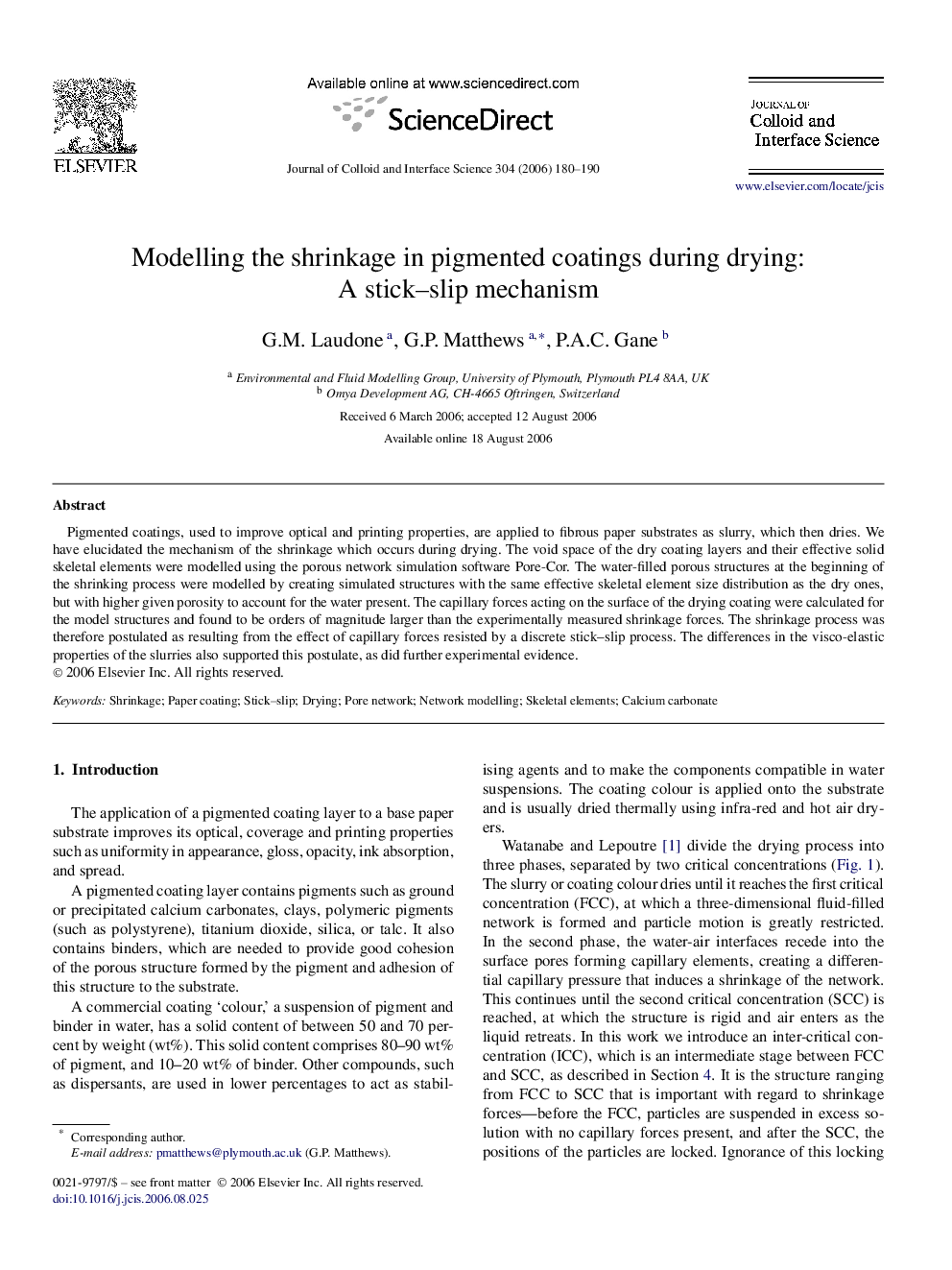| Article ID | Journal | Published Year | Pages | File Type |
|---|---|---|---|---|
| 613189 | Journal of Colloid and Interface Science | 2006 | 11 Pages |
Pigmented coatings, used to improve optical and printing properties, are applied to fibrous paper substrates as slurry, which then dries. We have elucidated the mechanism of the shrinkage which occurs during drying. The void space of the dry coating layers and their effective solid skeletal elements were modelled using the porous network simulation software Pore-Cor. The water-filled porous structures at the beginning of the shrinking process were modelled by creating simulated structures with the same effective skeletal element size distribution as the dry ones, but with higher given porosity to account for the water present. The capillary forces acting on the surface of the drying coating were calculated for the model structures and found to be orders of magnitude larger than the experimentally measured shrinkage forces. The shrinkage process was therefore postulated as resulting from the effect of capillary forces resisted by a discrete stick–slip process. The differences in the visco-elastic properties of the slurries also supported this postulate, as did further experimental evidence.
Graphical abstractDrying process of a pigmented coating layer using mercury porosimetry, rheology, and the Pore-Cor model.Figure optionsDownload full-size imageDownload as PowerPoint slide
